DIY Card Catalog Dresser Makeover
How to easily makeover your old thrifted furniture into card catalog/apothecary-style nightstands for your farmhouse-style bedroom. With a router and card catalog hardware, we easily transformed this Ethan Allen Chest of Drawers into a DIY Card Catalog Dresser Makeover.
Get more painted nightstands ideas here!
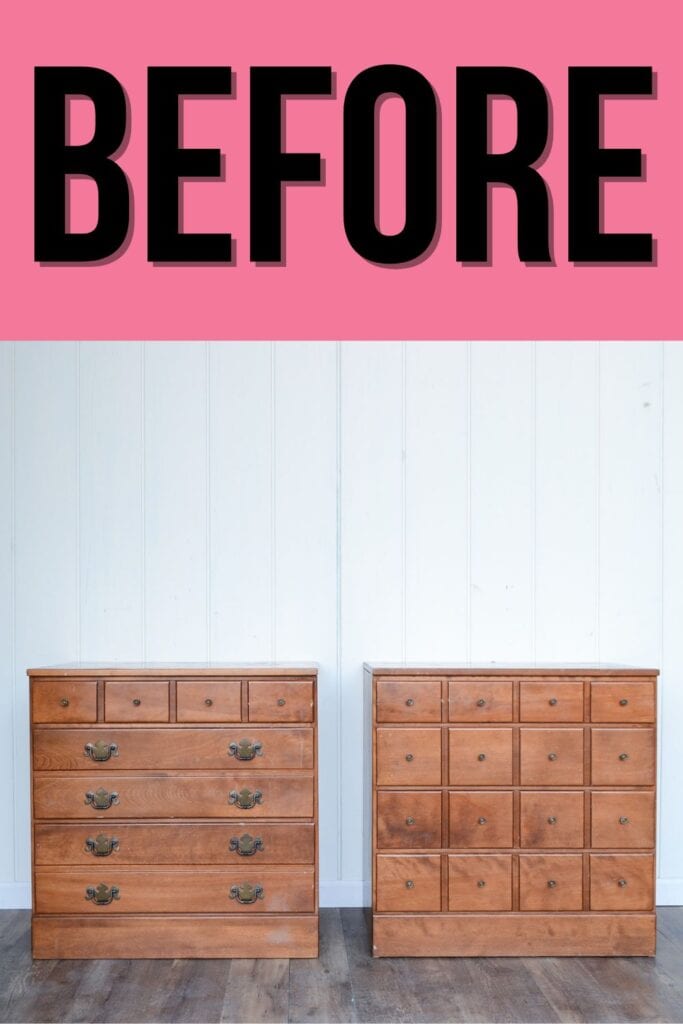
Last weekend I spotted this apothecary-style dresser on Craigslist. Since I’ve been searching for something similar for a while now, it only took a few minutes to contact the seller and jump in the truck to snatch them up.
On Craigslist he only had a photo of the dresser on the right, so I had no idea what the other one was going to look like.
I was so disappointed to find that the “matching” dresser wasn’t the same, but I bought them both anyway. There had to be a way to change it so it had the apothecary feel to it.
If you want to know my best places to get good furniture for cheap, check out this post to find out.
Faux Card Catalog Cabinet Inspiration
A few days later I stumbled across a post from Julia at Boxwood and Brass. Her pieces are always top-notch and I just love following her to see what she does next.
Well, by a miracle, she had just finished up the same exact Ethan Allen dresser. It was spot on with what I wanted to do and I finally had an idea of how to accomplish it.
I quickly scoured the comments to see if she had given any hint about how she had transformed the drawer fronts.
Her husband had routered out the drawer fronts to create her vision. That was just the inspiration I needed to transform our dresser.
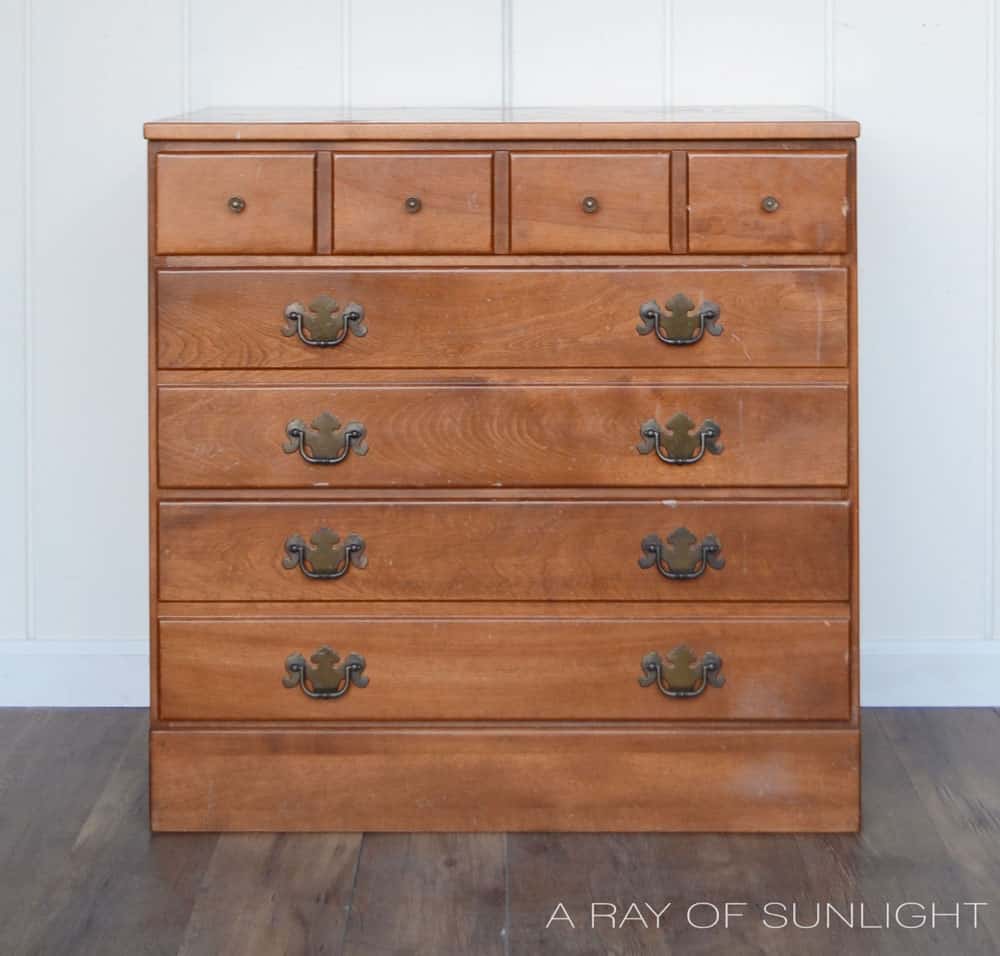
Within 24 hours I had called my dad to get his advice and ask for his help on this one.
I had never used a router before, even though it’s on my list of tools to get.
Of course, I couldn’t wait to see the transformation for myself, so we got to work as soon as possible.
We wanted to mimic the exact grooved-out design that Ethan Allen had originally created, but we wanted the bottom two drawers to look like they were actually 16 small drawers instead 4 longer drawers.
The original grooved-out design was 5/8″ wide x 1/8″ deep. Each edge had an angle, just like a “v”.
Supplies to make your own Card Catalog Style Dresser
As an Amazon Associate, I earn from qualifying purchases. I also may earn from other qualifying purchases with other companies or get free product to review and use. All opinions are my own.
- Bondo / Wood Filler
- Router – Also available at Home Depot
- Router Bits – 5/8″ Straight Bit & 1/4″ V- Groove
- Measuring Tape / Ruler & Pen
- Clamps
- Straight Edge (We used a scrap of wood that had a straight edge)
- Eye Protection
- 220 grit sandpaper (this is the best kind!)
- Painter’s Tape
- Painter’s Plastic
- Citristrip
- Clear shellac
- General Finishes Bone White Chalk Style Paint (Not available anymore, but General Finishes Alabaster is a great alternative).
- Paint Sprayer
- General Finishes Antique Walnut Gel Stain
- Varethane Polyurethane
- Card Catalog Style Hardware
- Kreg Cabinet Hardware Jig
DIY Apothecary Drawers
First, we filled in all of the old hardware holes with Bondo. Wood filler works too, but it’s a pain compared to Bondo.
Since publishing this post I have learned of an even easier way to fill hardware holes – Learn more about how to fill hardware holes here.
You can also check out this Comparison: Filling Holes when Replacing Cabinet or Furniture Hardware to see what types of wood filler works the best!
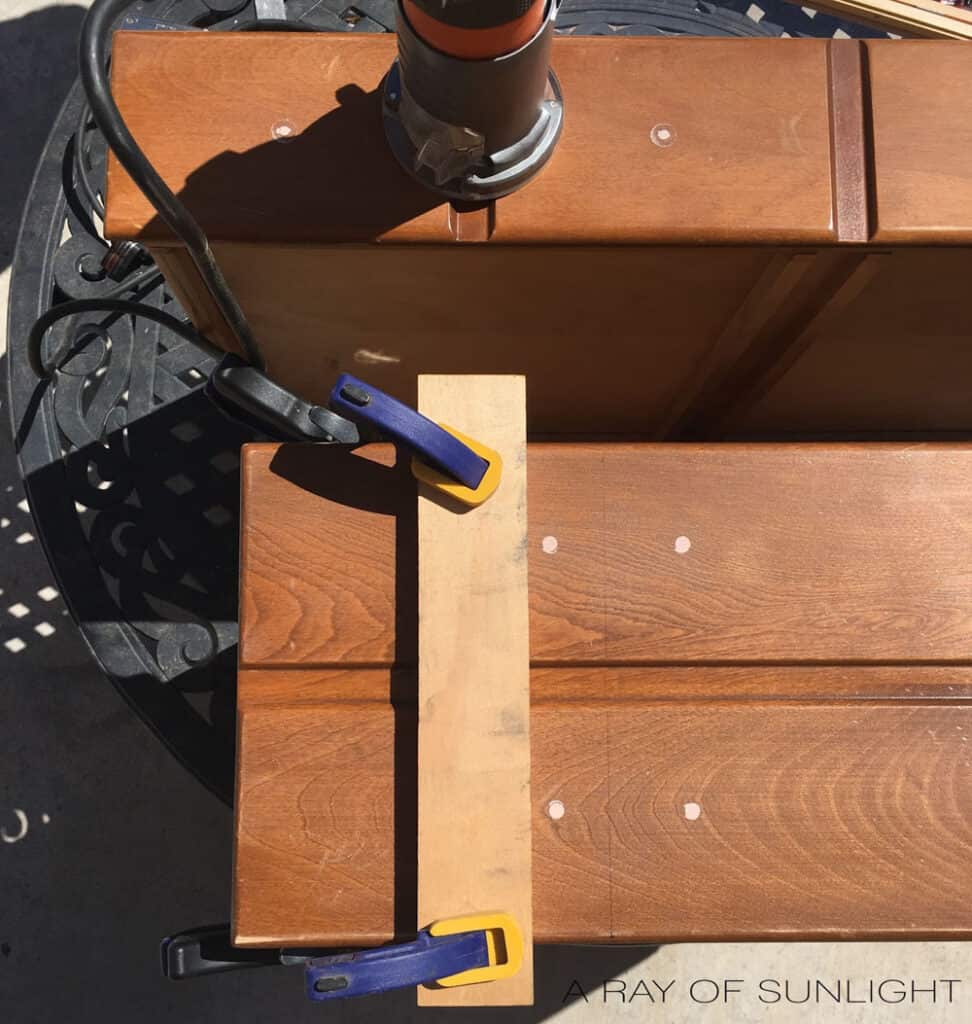
Using the top drawer of the dresser as a guide, we measured and clamped the straight edge to the drawer front.
Using the Straight Bit
Once everything was measured and then double-checked, we put the straight bit onto the router.
We held the router level and kept it flush against the side of the straight edge.
Without the straight edge, there is no way we would have ended up with completely straight lines!
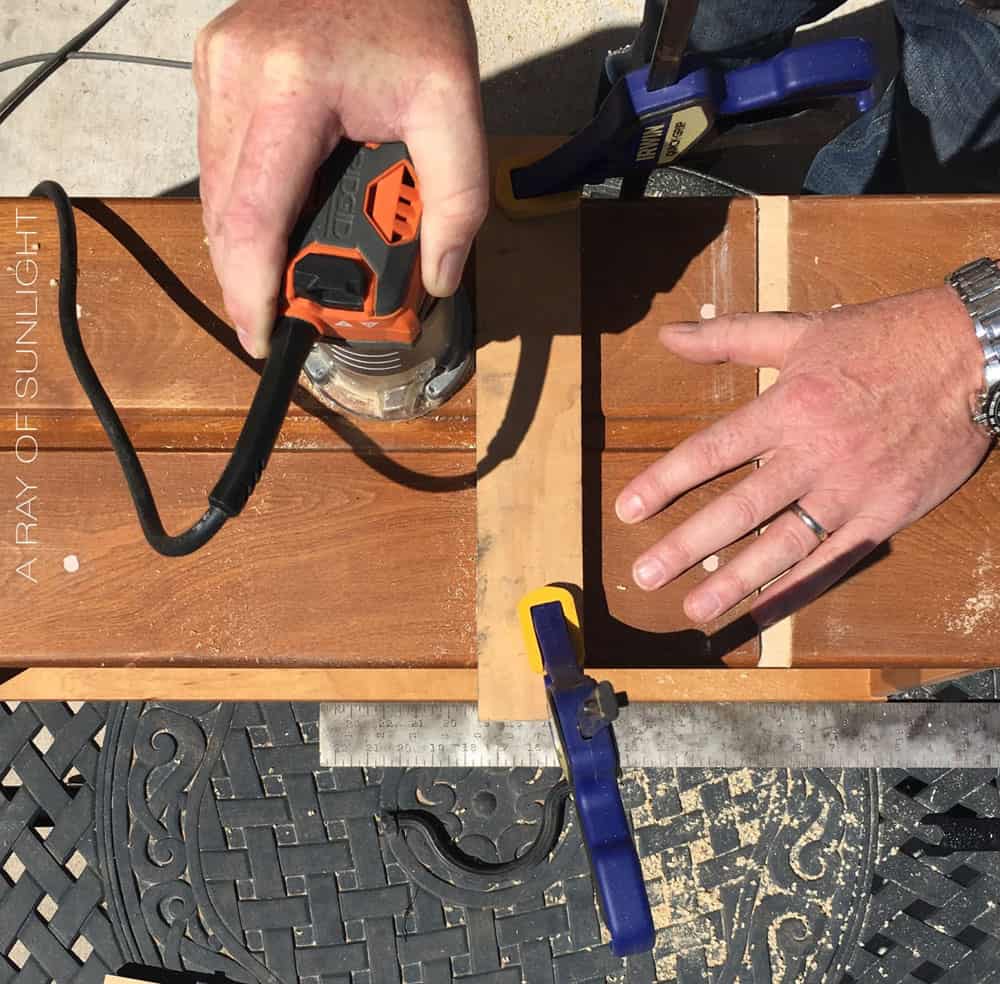
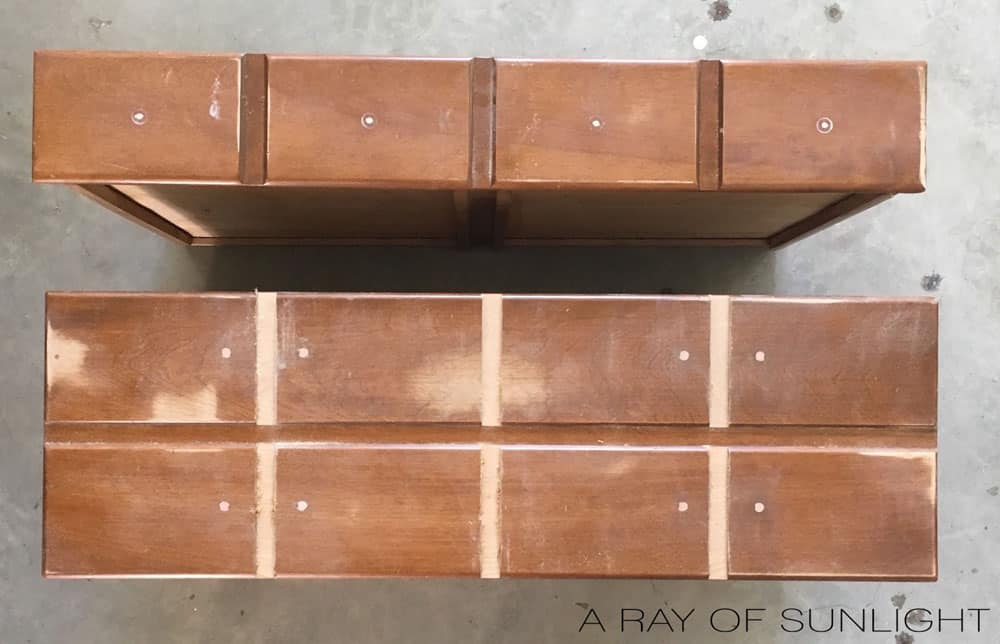
Using the V-Groove Bit
Once all of the straight grooves were cut, we changed out the Straight Bit for the V-Groove Bit.
This time we wanted the center of the router to be right on the edge of the groove we just routered.
We measured and then checked to make sure our measurements were correct by placing the center of the bit right on the edge.
Then we made sure the edge of the router base was flush against the straight edge. Once again we kept the router flush against the straight edge as we cut.
*Note: Be aware of the direction the bit is spinning. At one point the bit didn’t want to cut evenly and straight. We realized that when we were cutting one edge, the router needed to be pushed away from me. When we cut the other side of the groove, the router had to be pulled towards me.
Otherwise, the bit was cutting away from the wood, causing it to jump around.
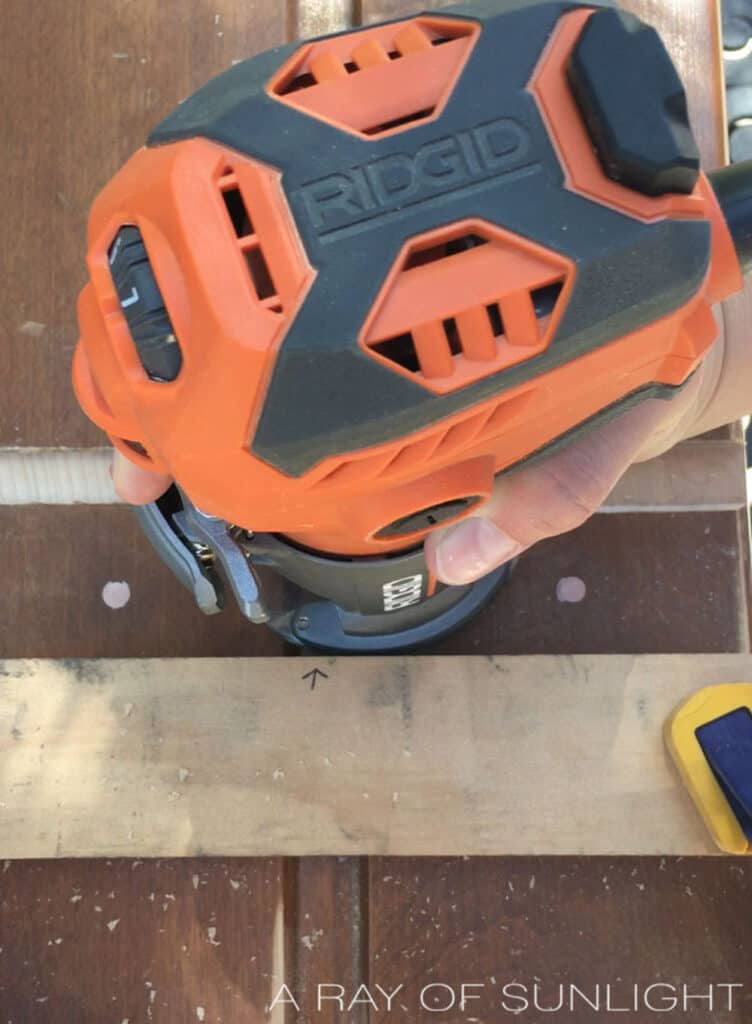
The most time-consuming process was measuring and then double and triple-checking to make sure we were cutting in the right spot.
It wasn’t something we could mess up on and just start on a new board. But the extra time double-checking was well worth not messing up.
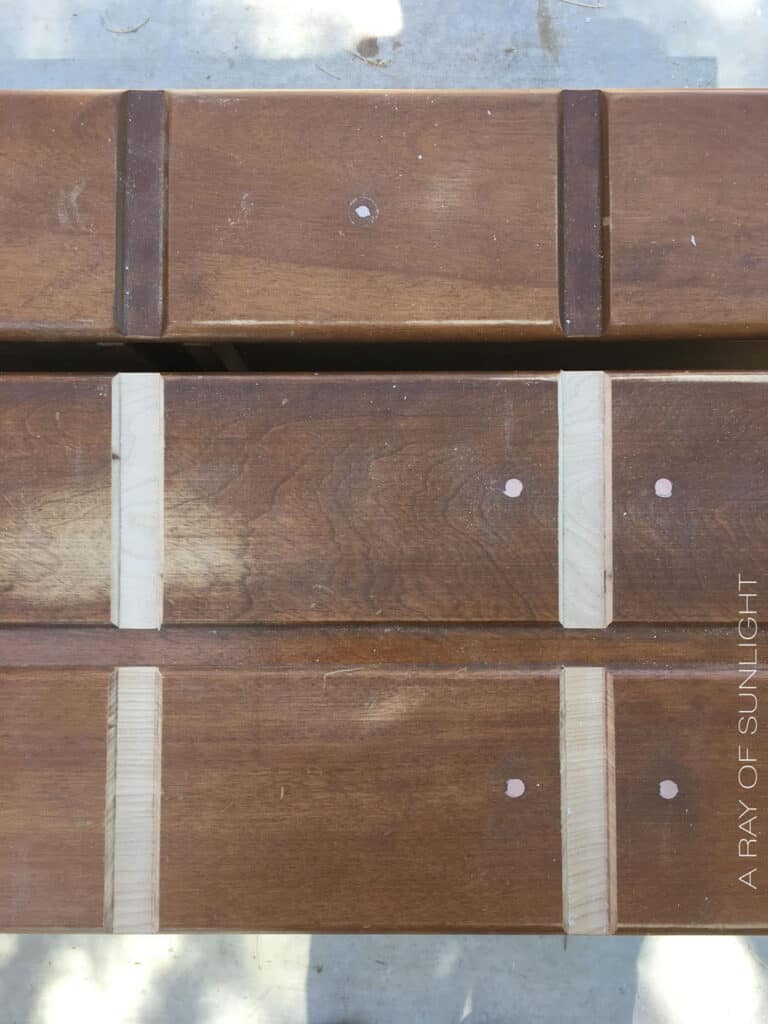
Then we cleaned up the edges with the V-Groove Bit.
When all the new grooves were cut, we sanded everything smooth with 220-grit sandpaper.
Prepping card catalog dressers for paint
To prep the dressers for painting we stripped the tops with Citristrip, lightly sanded everything, and thoroughly cleaned them.
Learn how to Remove an old finish with Citristrip here.
Or read this post about The Importance of Sanding Before Painting Furniture here!
We taped off the tops and the insides of the drawers to prevent overspray from getting into the drawers.
Learn more about How to Prevent Overspray When Painting Furniture here!
Then we gave them 2 coats of clear shellac.
Shellac is super important to use when painting lighter colors. The wood/stain tends to bleed through the lighter colors, causing random yellow/red spots. It’s also called bleed-through.
Shellac primer works too, but clear shellac dries clear instead of white primer, making it easy to distress without white under your paint. (Learn more about preventing bleed through here!)
Read this post to learn more about The Best Primers for Painting Furniture (and How to Choose the Right One).
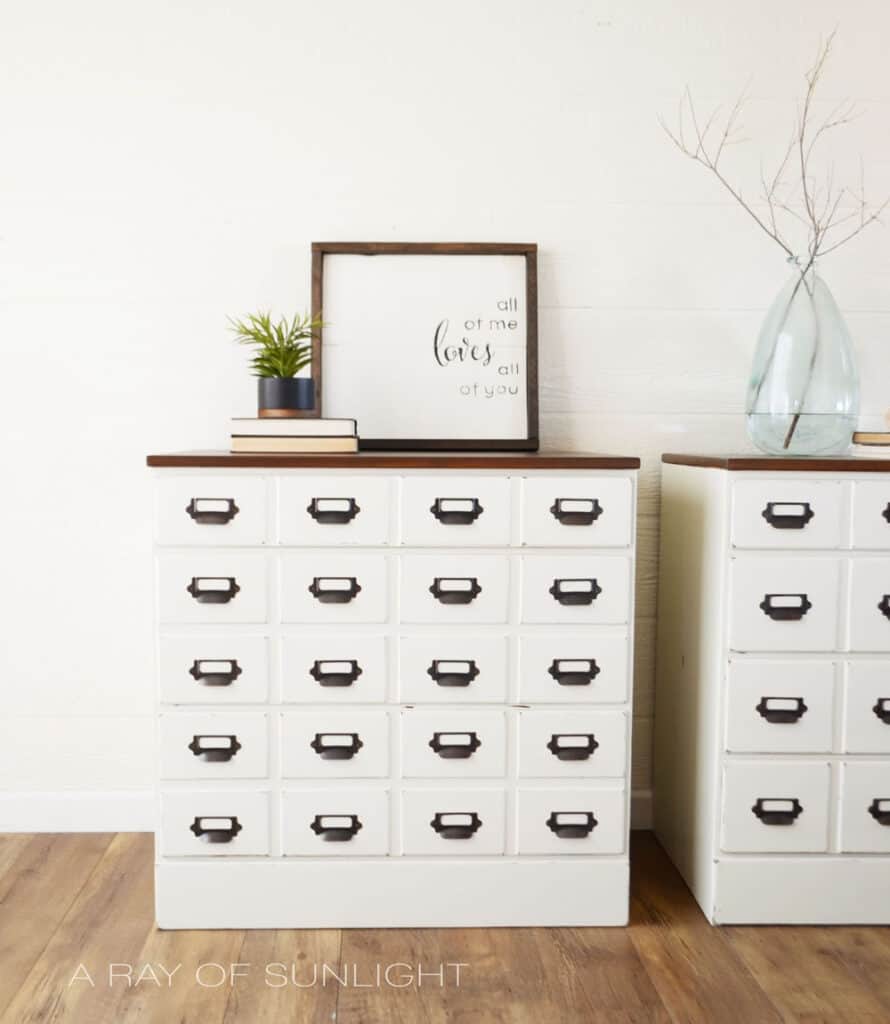
Painting with Chalk Paint
We used our paint sprayer and sprayed on about 3 coats of General Finishes Bone White Chalk Style Paint (Not available anymore, but General Finishes Alabaster is a great alternative).
Read this post to learn all about the Best HVLP Paint Sprayers for Furniture!
Usually, we spray on at least 5 coats when we paint a shade of white, so I was super happy to see amazing coverage with this paint.
Check out The Best White Chalk Paint for Furniture here.
Using 220 grit sandpaper we distressed the edges and then wiped and vacuumed away the dust.
Learn all about the 6 best distressing furniture techniques here!
Then we took all of the tape and plastic covering off and we gave the tops two coats of General Finishes Antique Walnut Gel Stain.
Read this post to learn more about How to Stain Wood Darker.
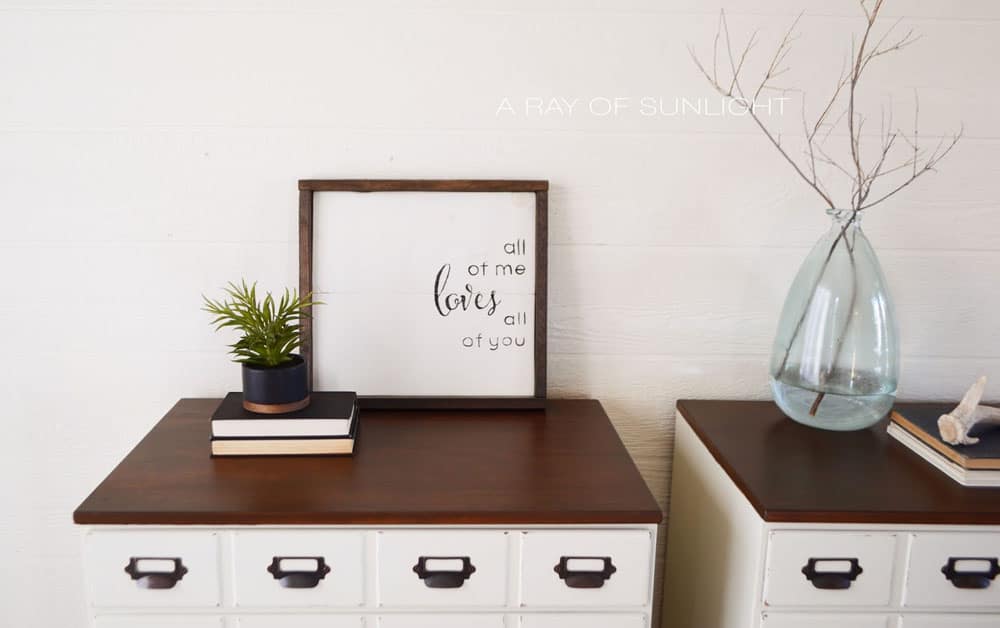
Finishing
Once all the paint and stain were dry we sprayed on multiple coats of my favorite clear topcoat, Varethane Polyurethane in Satin.
The polyurethane just helps add durability and makes everything easy to wipe down.
Learn ALL of my tips and tricks on How to Spray Polyurethane here!
And learn all about the best Topcoats for Painting Furniture here!
Card Catalog Hardware
We ordered the card catalog style hardware from D. Lawless Hardware.
You can also order the screws for your hardware from them as well.
Since we had 36 pieces of hardware to attach, I quickly made a handmade version of a hardware template out of cardboard, tape, and a small level.
I measured out where I wanted the hardware, made holes in the cardboard, and marked on each drawer where the screws would go.
It made attaching the hardware so much more simple.
**Update: I recently bought this Kreg Cabinet Hardware Jig that makes measuring out the hardware holes super easy peasy!**
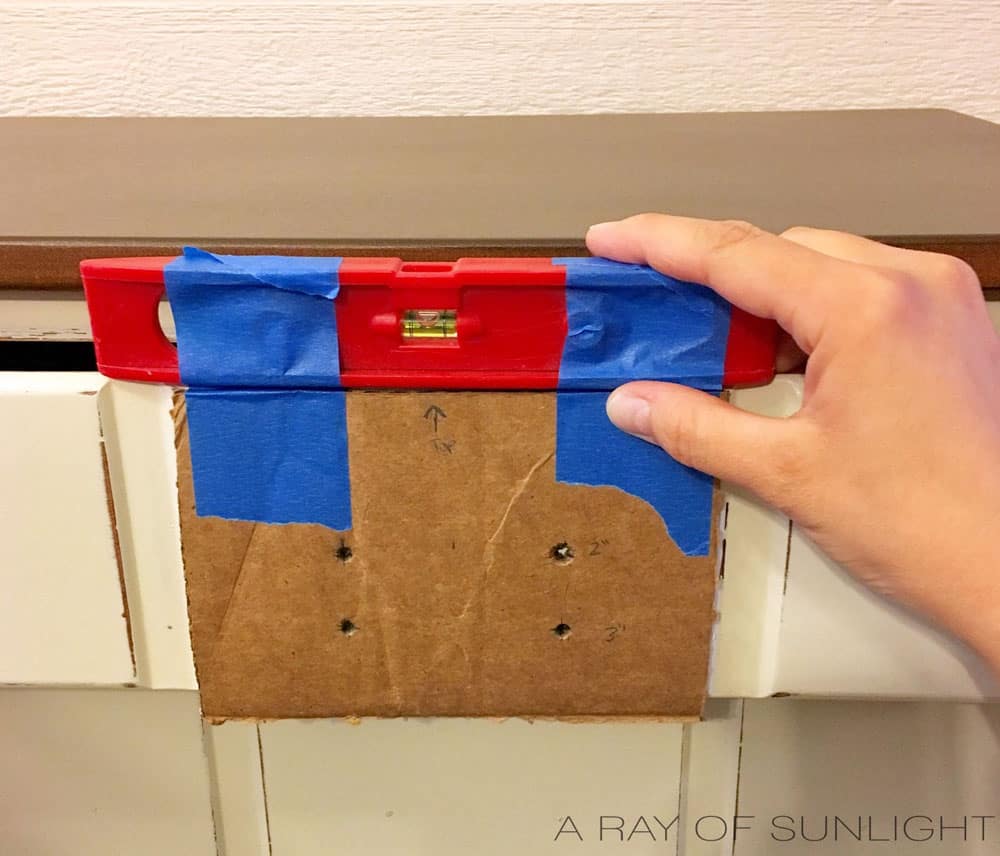
I couldn’t be happier with the final results!
Even up close and in person, I can’t even tell that the dressers didn’t come this way to begin with.
The transformation is absolutely amazing and I can’t wait to find another dresser with basic drawers to transform.
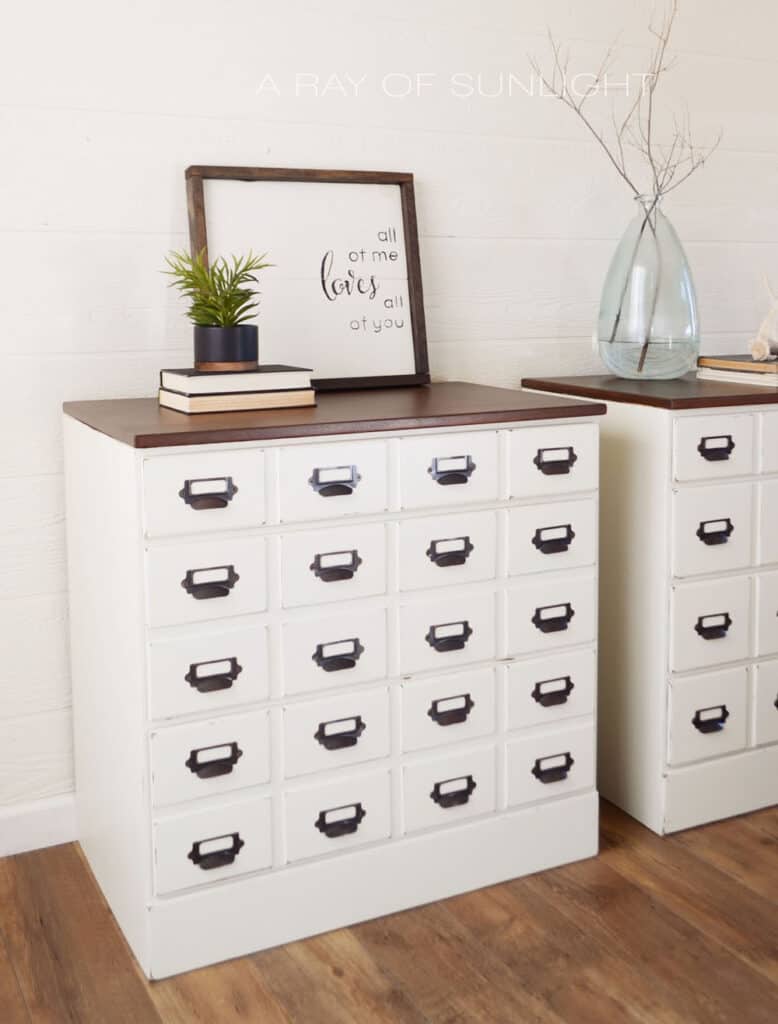
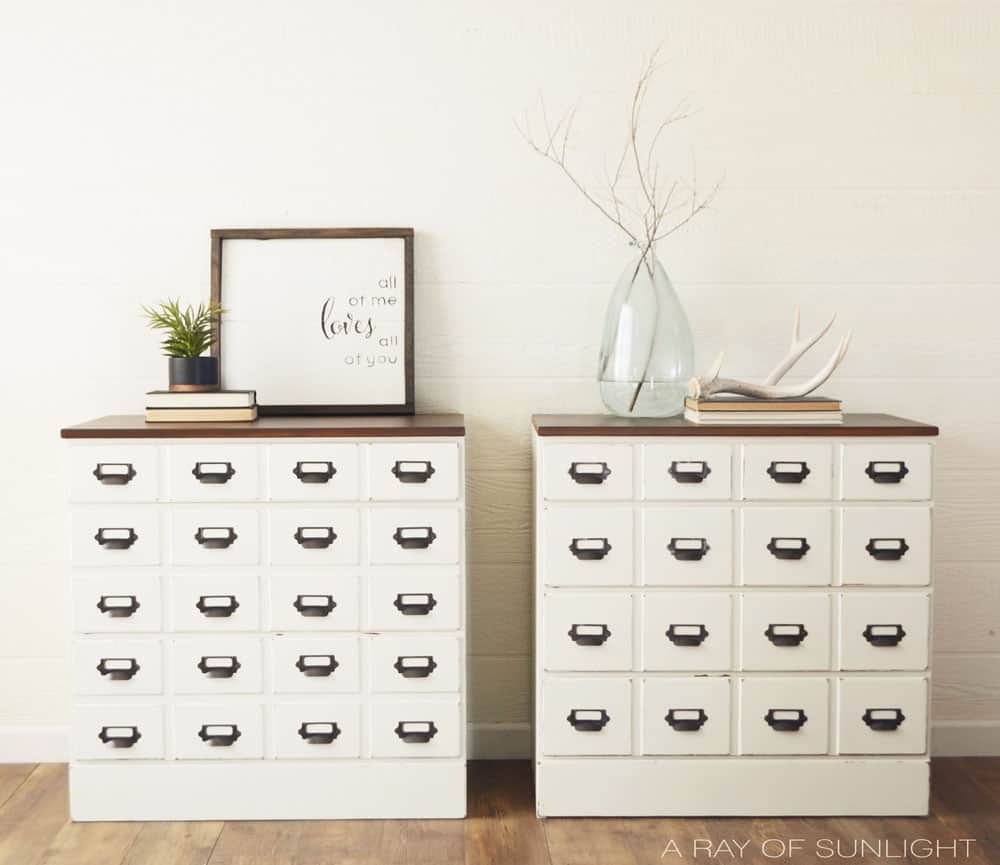
More Before And After Makeovers
Click any of these “before” photos below to view the “after” of that makeover.
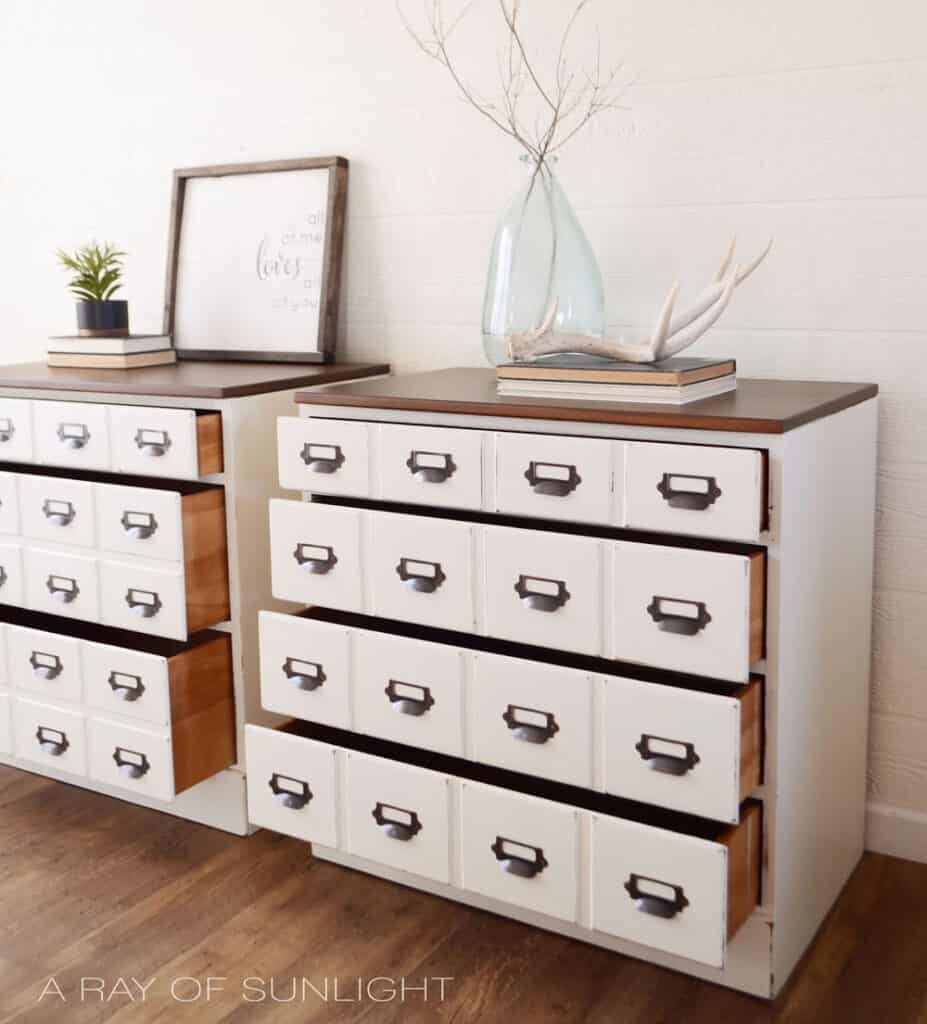
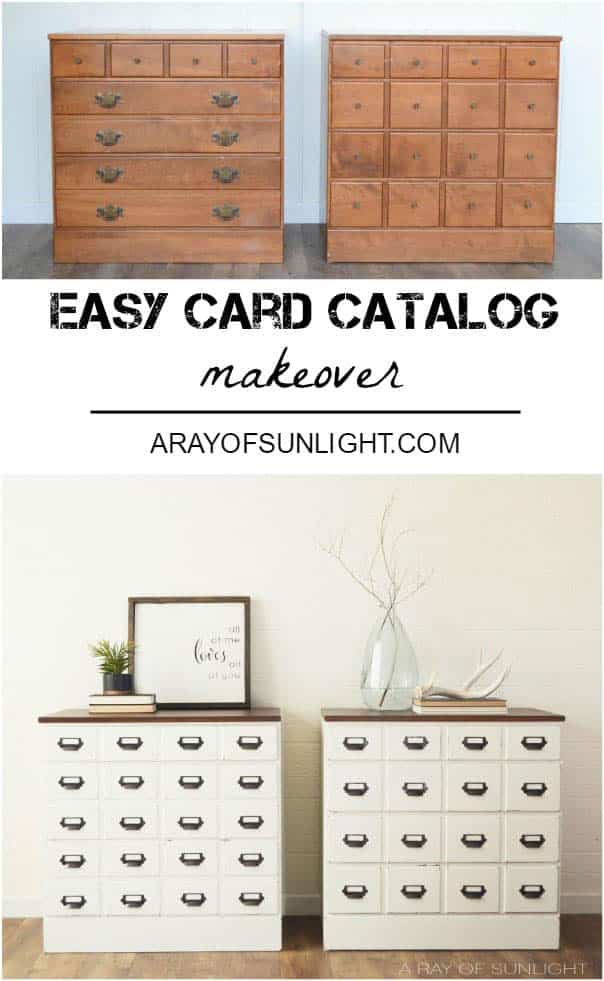
Related Makeovers:
- Mustard Yellow Card Catalog Dresser
- Black Card Catalog End Tables
- Black Card Catalog Dresser and the easiest way to paint a dresser black!
- 30 Amazing Faux Card Catalog Makeovers!
- White Painted Dresser Ideas
Follow us on YouTube to get more tips for painting furniture.
Or share your project with us on our Facebook Group and be part of our community. See you there!

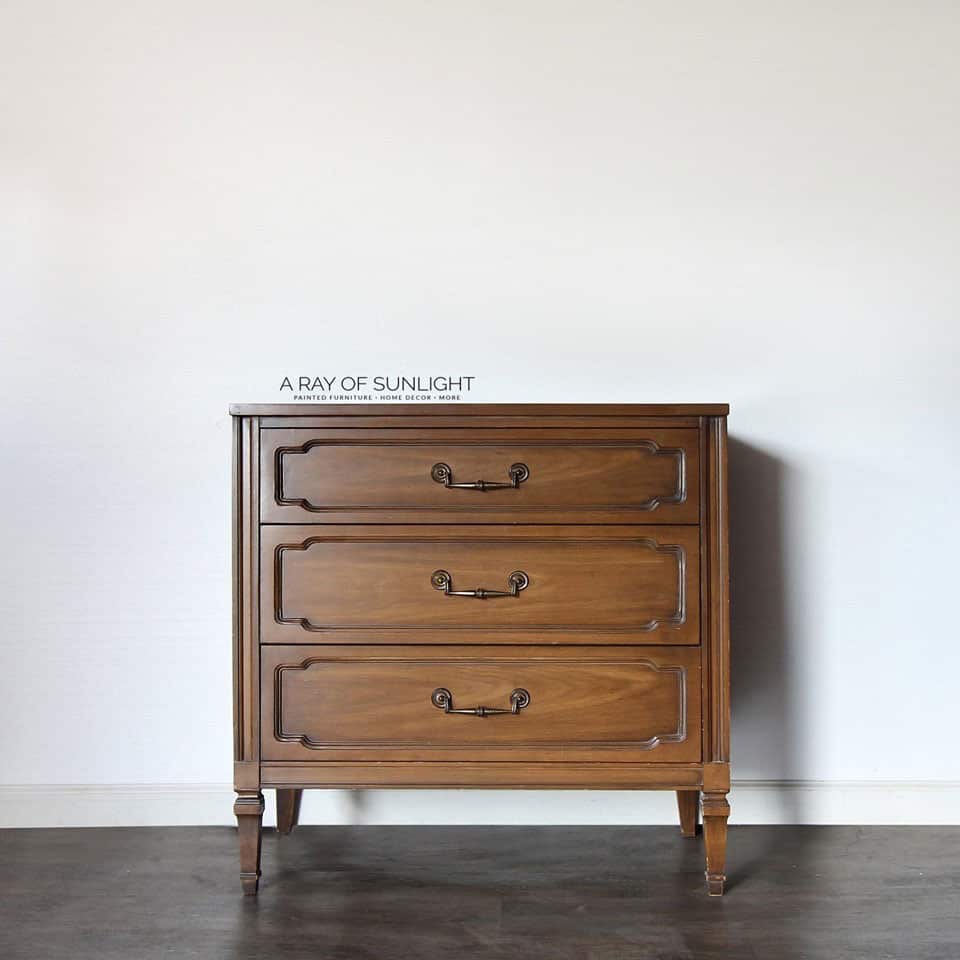
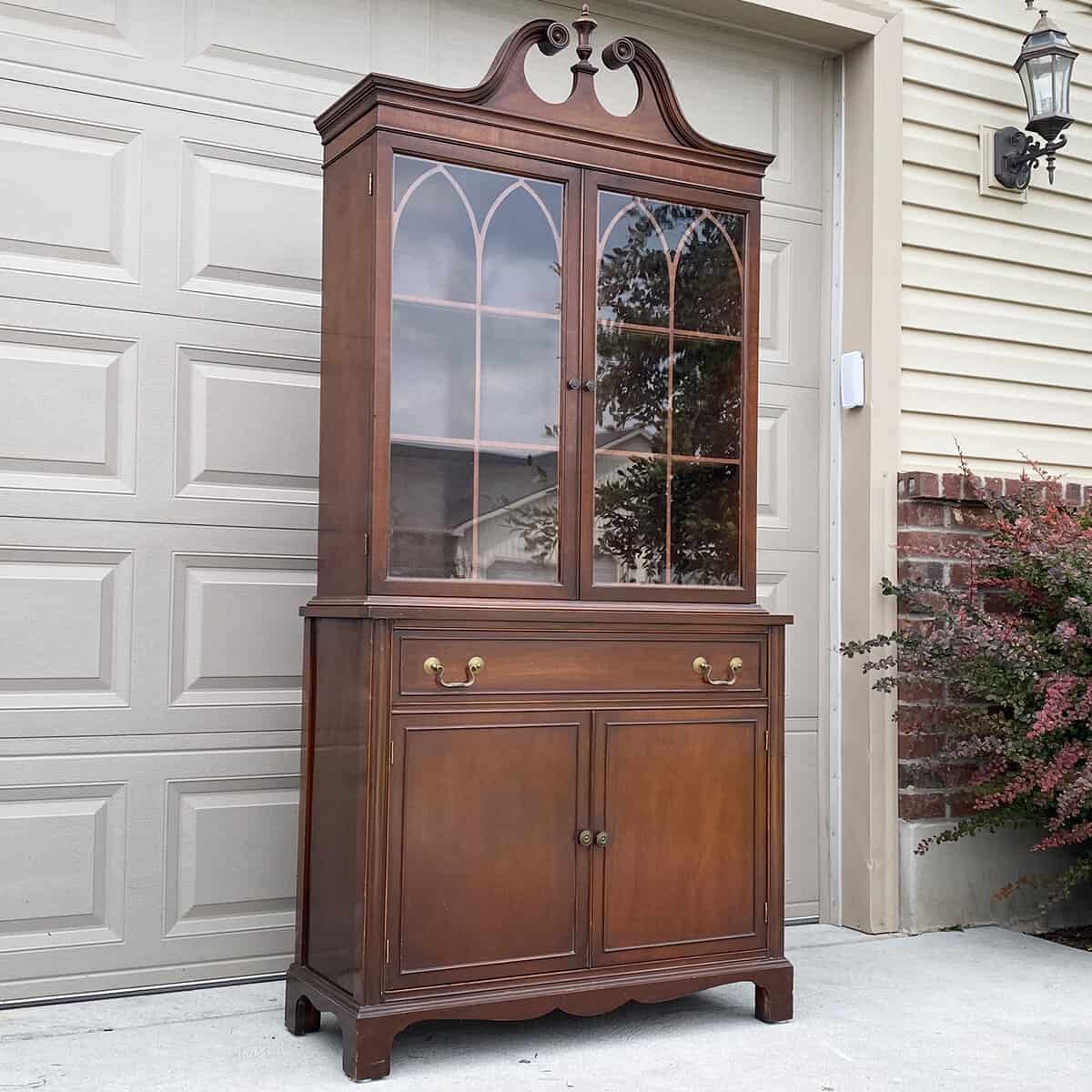
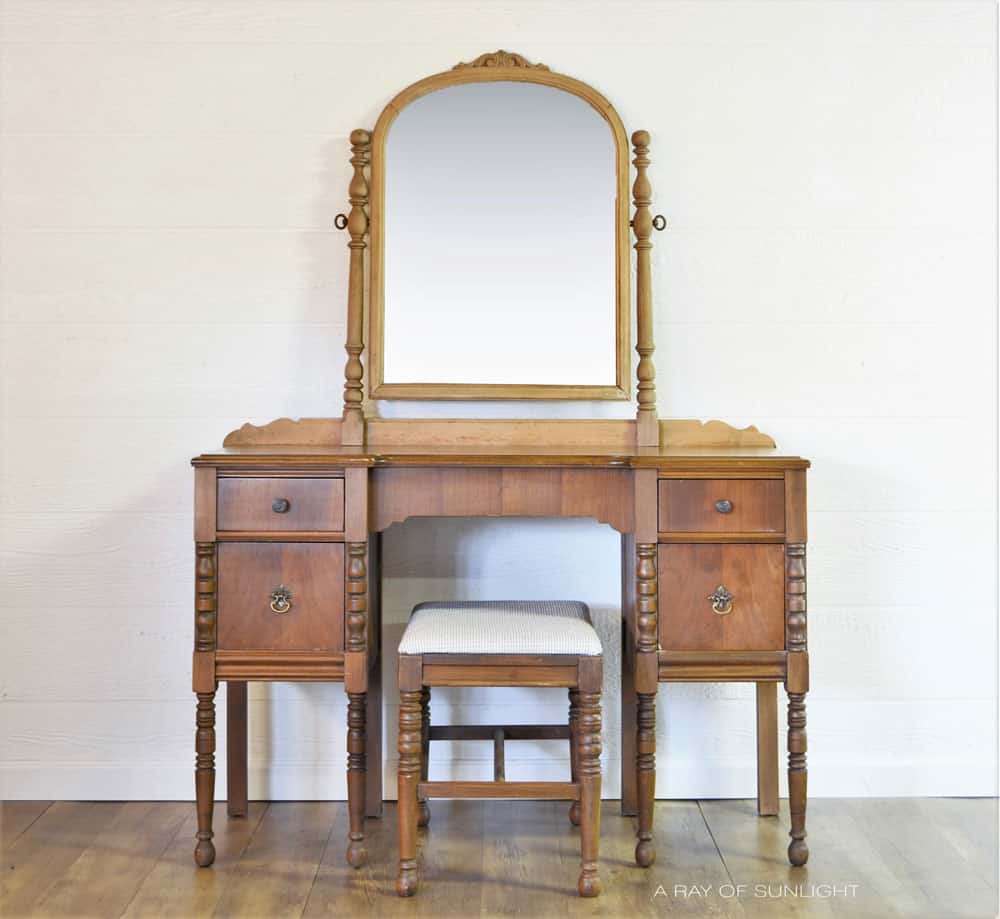
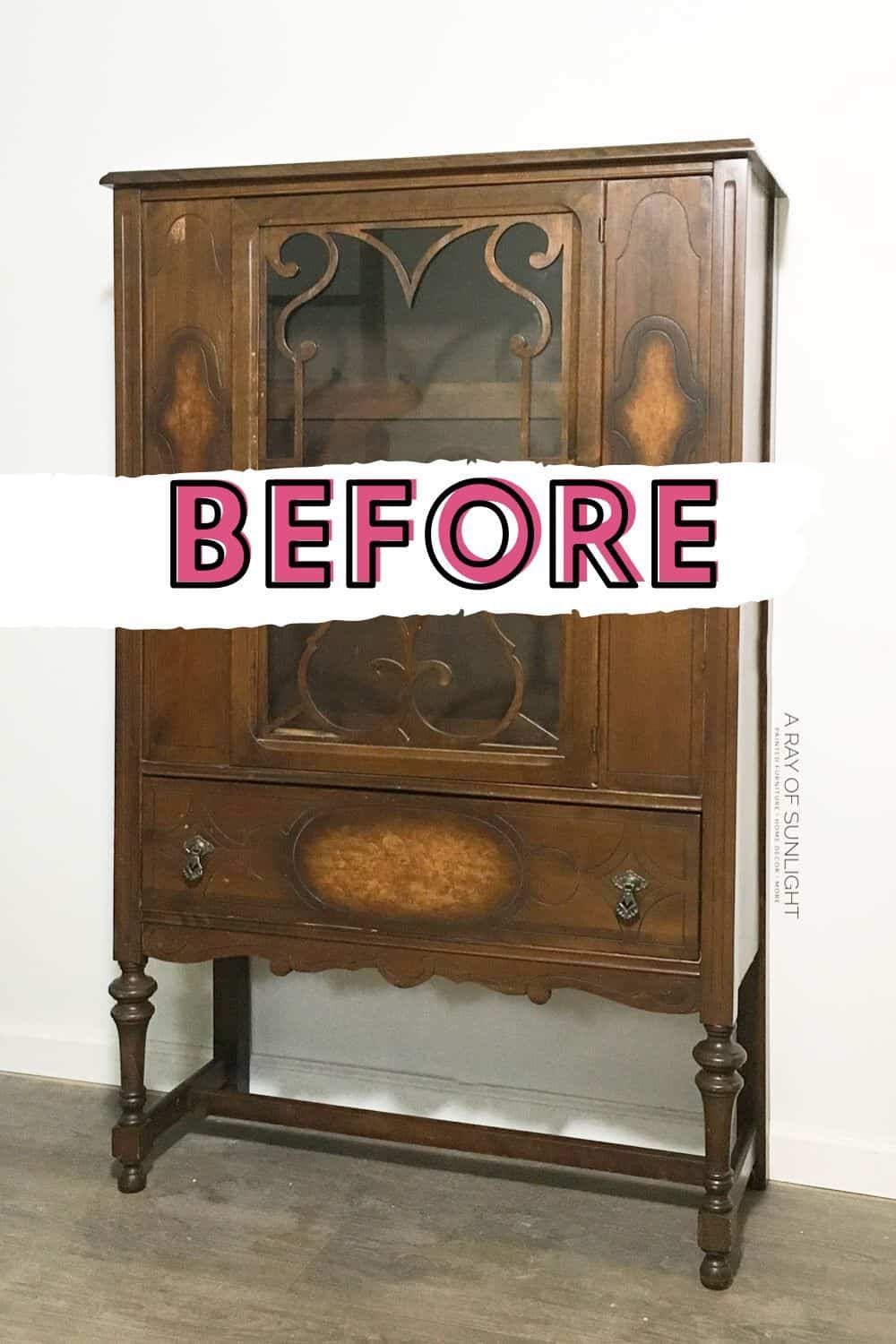
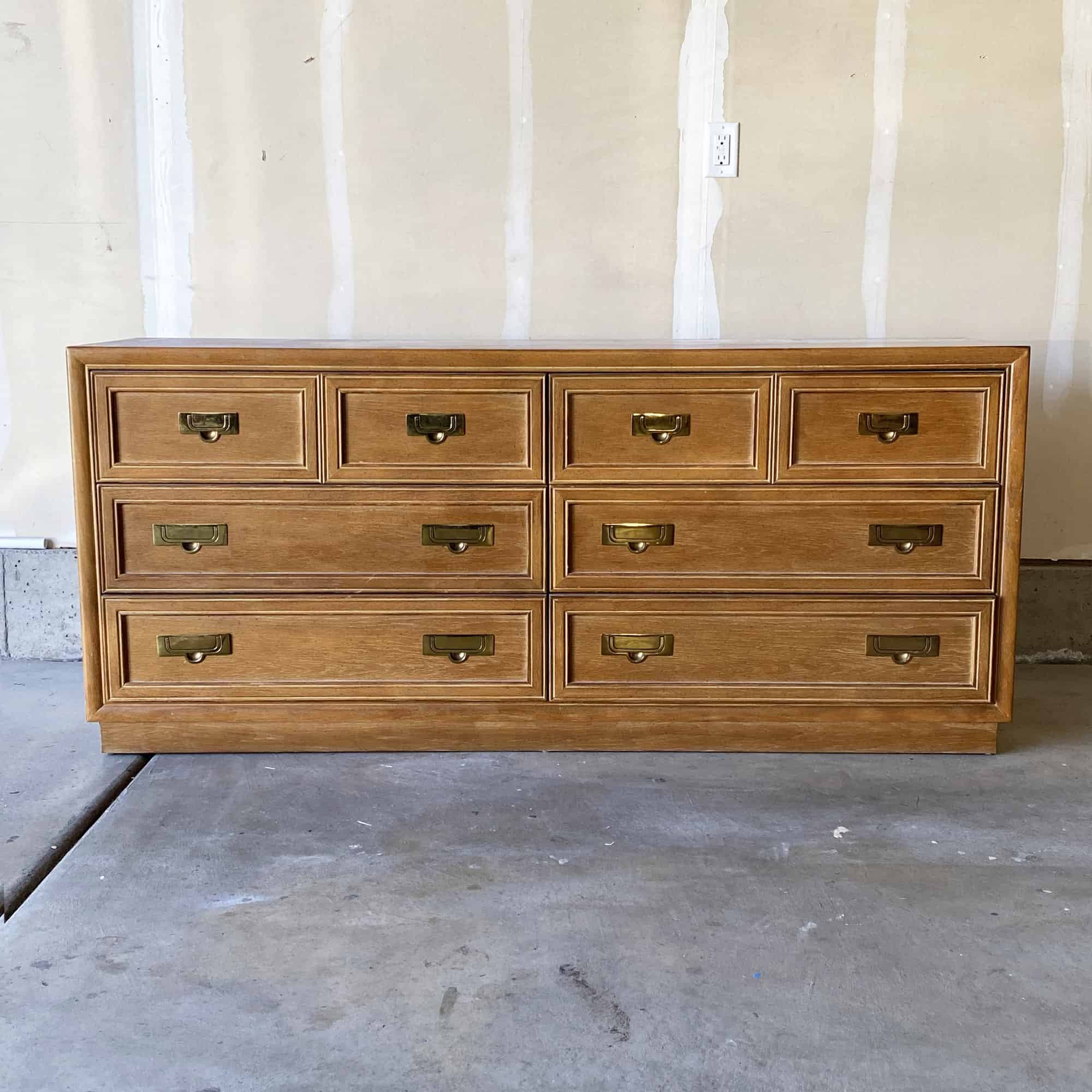
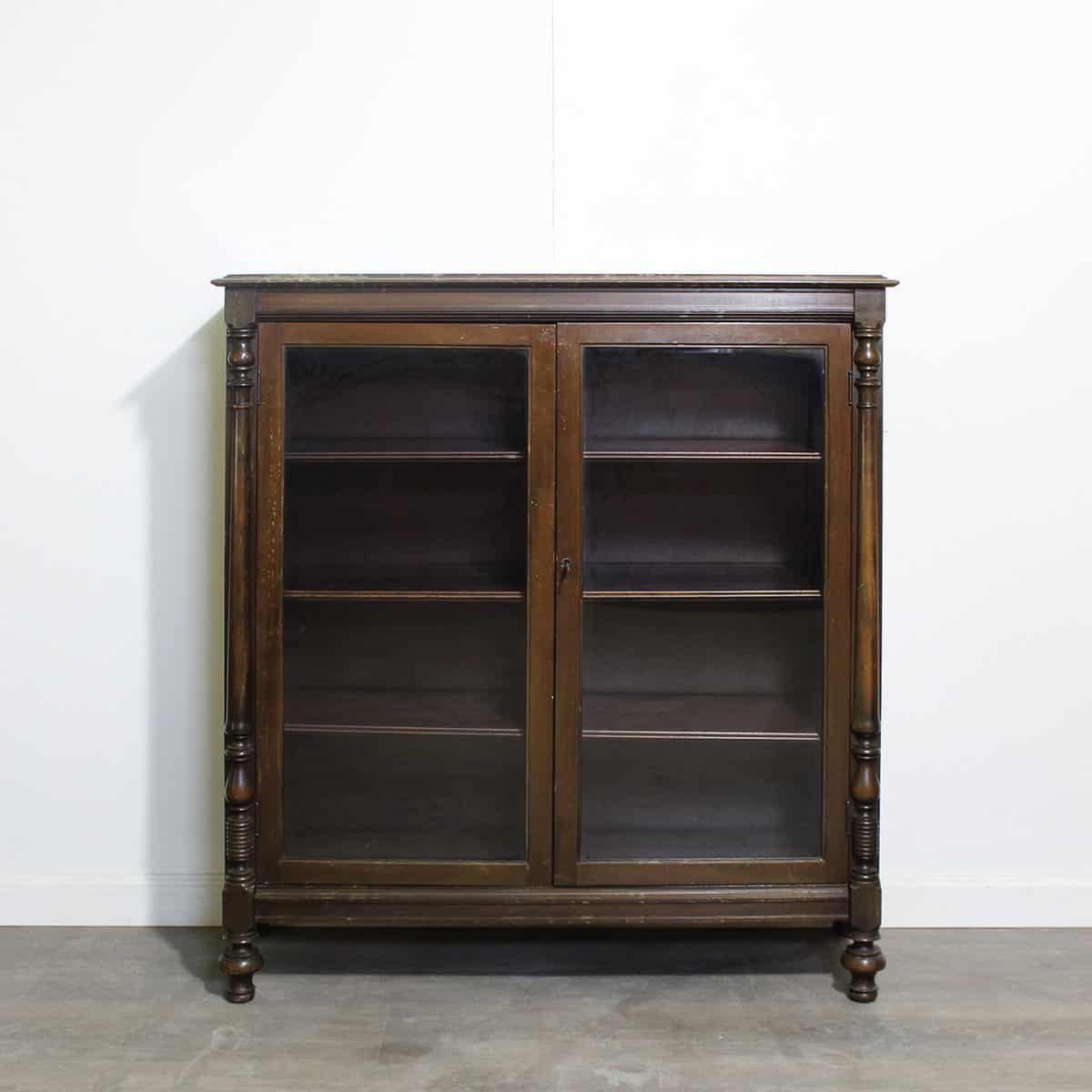
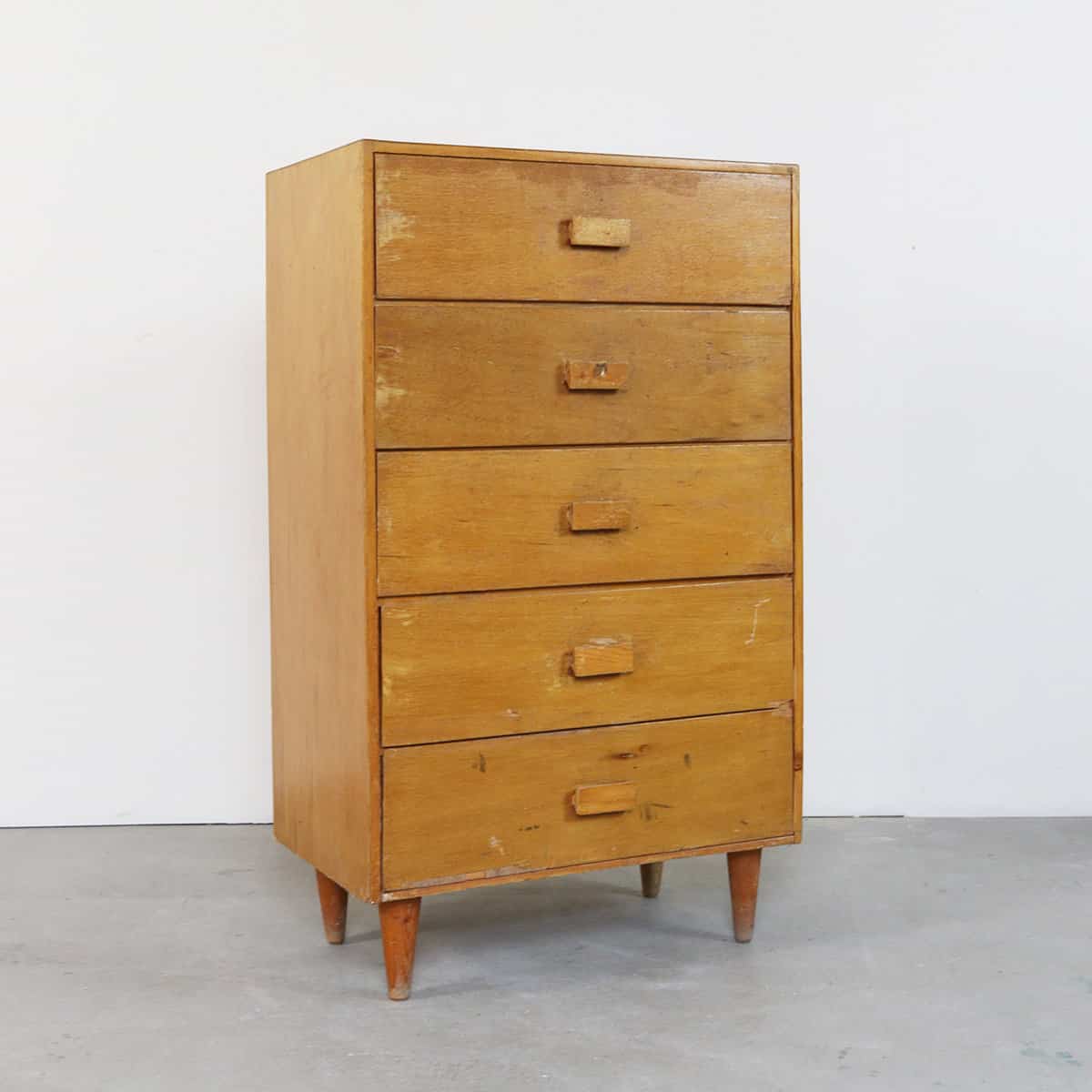
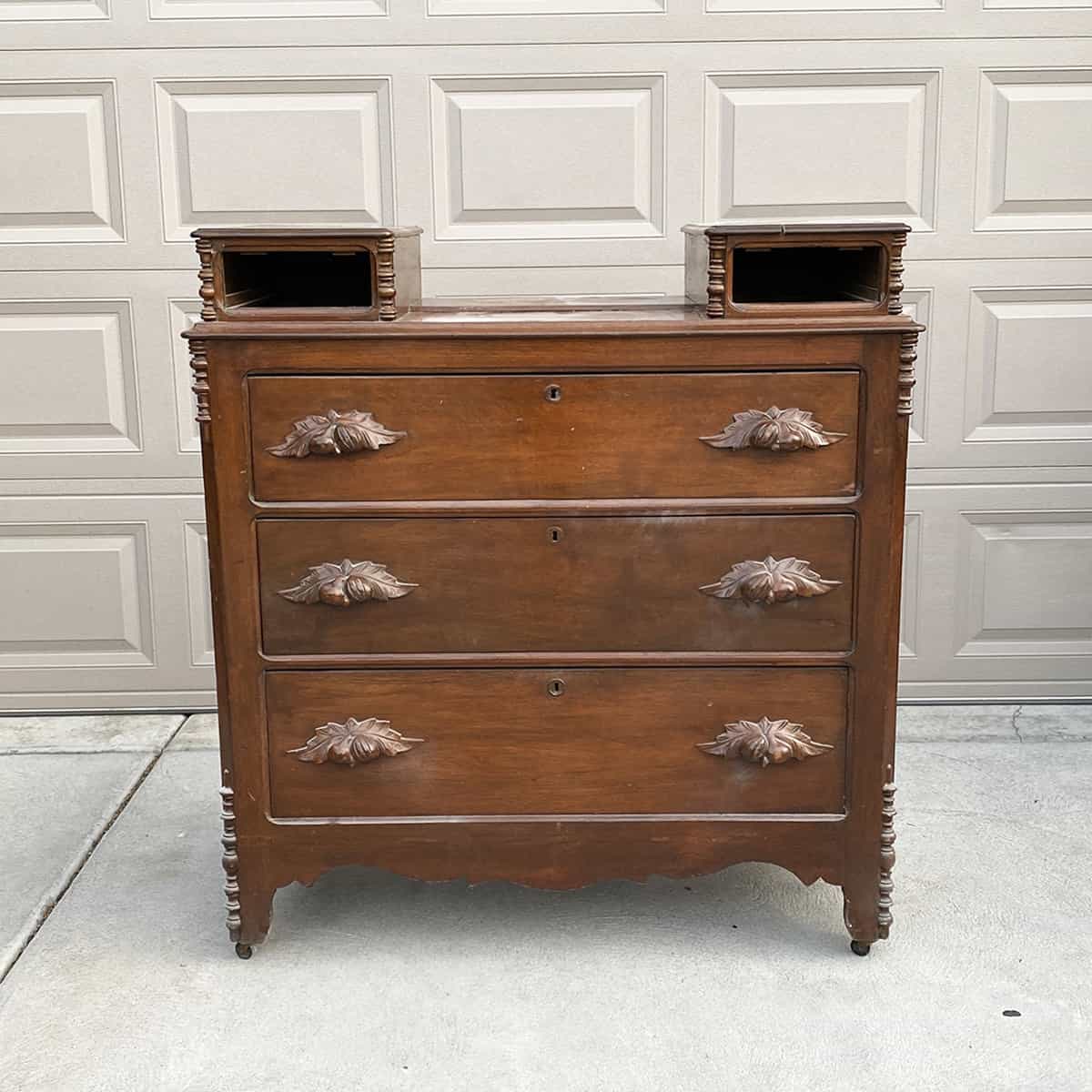
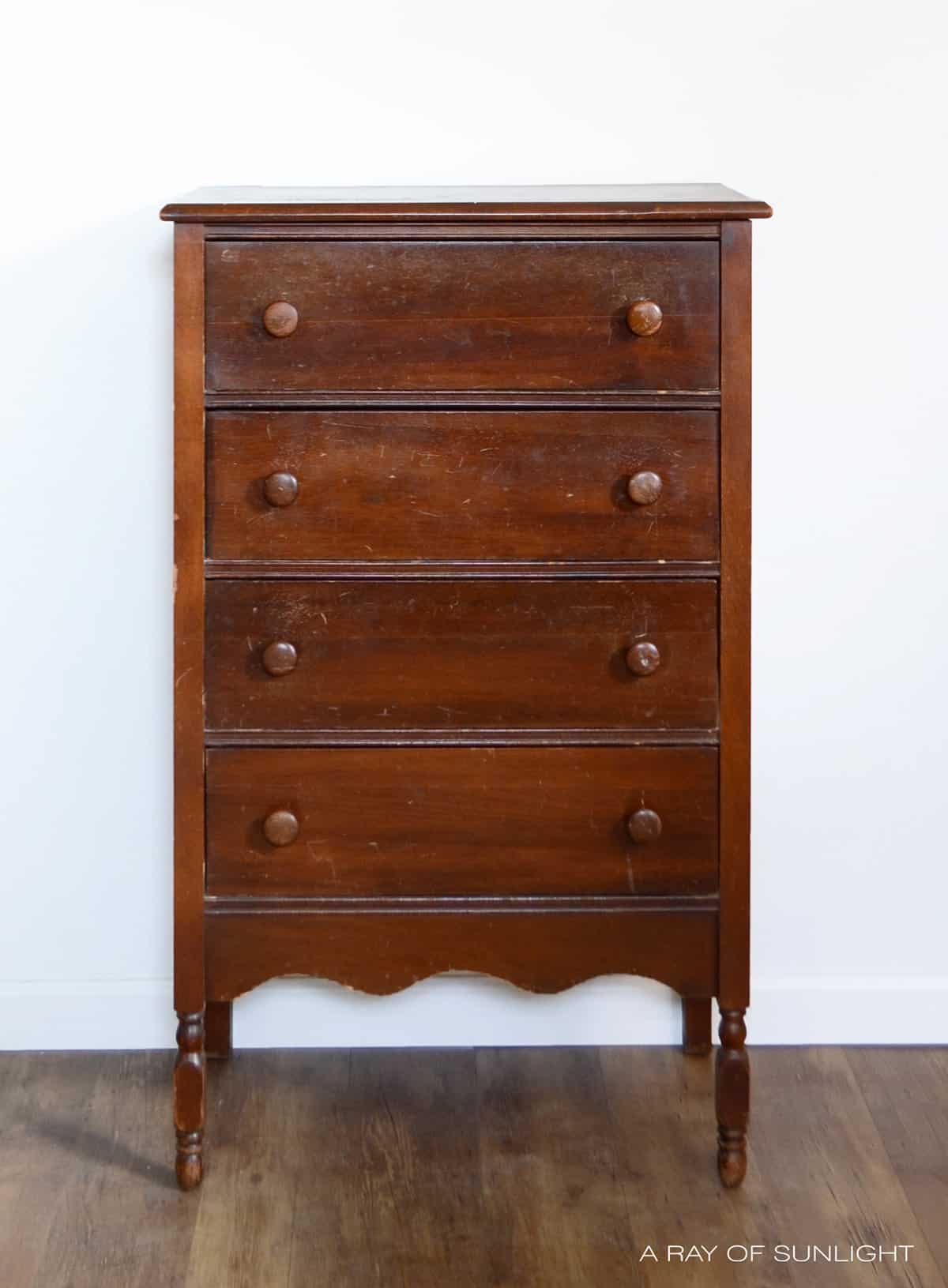
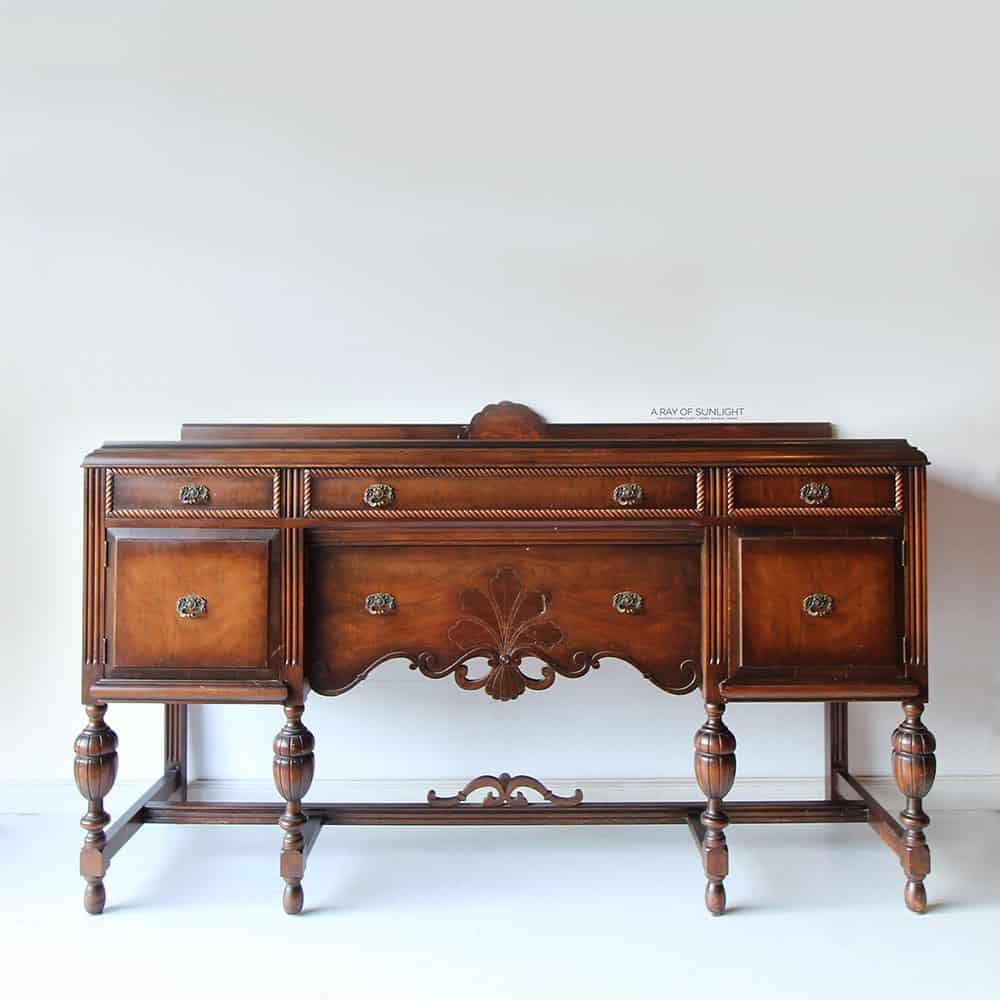
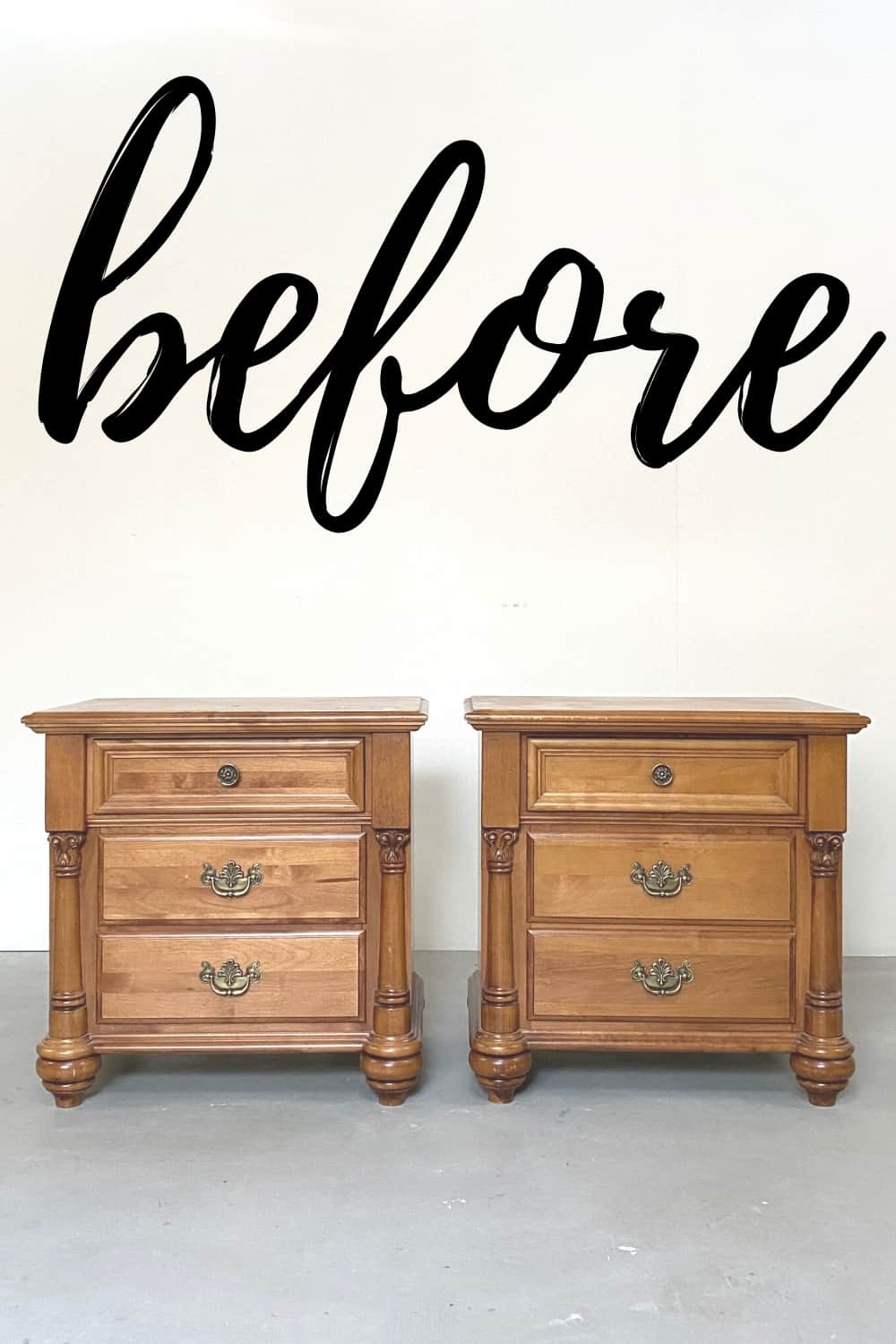
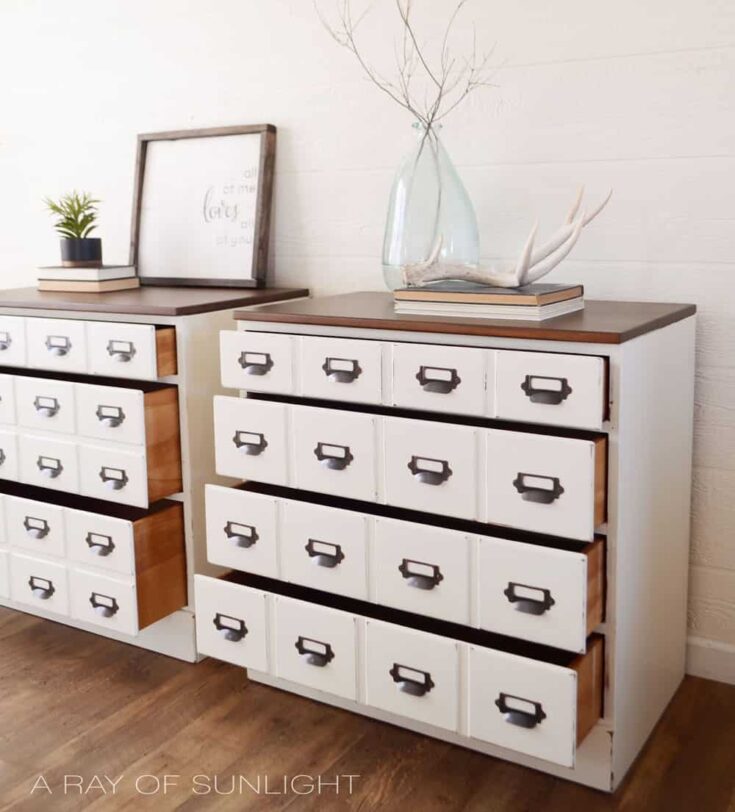



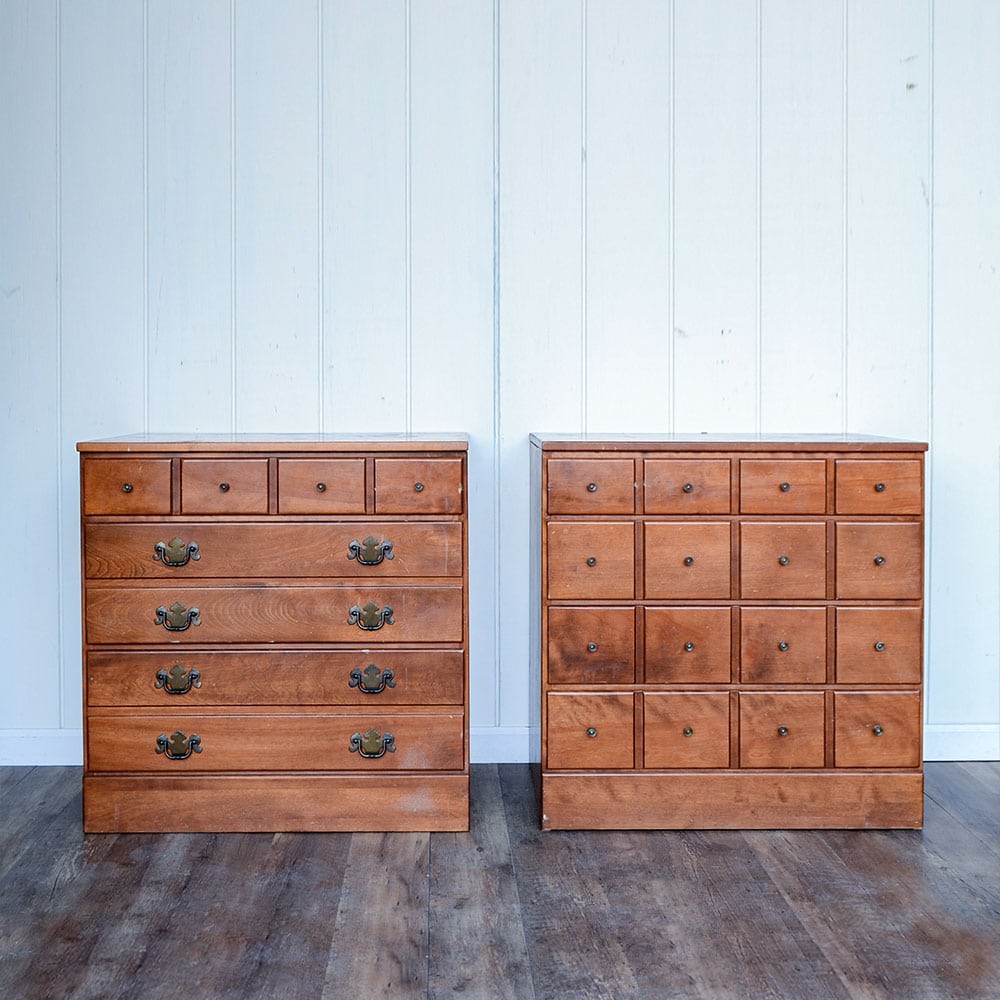
Great Blog Natalie Love your stuff.
Thank you so much Michelle! You're so sweet!
Amazing job! Love the dresser and you gave me some great ideas, Thanks for sharing ,
Great job. I do love General Finishes paints.
BEAUTIFUL!!
This is a great project — I really want to try this!
I have a question as I have 2 of these Ethan Allen dressers (My 6th grade Bday present was a bedroom set From EA) The dressers that I own, have a original finish/coat on them-basically clean by Windex. So I have always been hesitant to do anything with the dressers, as I wasn’t sure what my options could be for the top. I’m assuming yours were the same so curious what prep you did before the walnut stain?
Some of these dressers have a very shiny, plastic laminate top, and others have wooden top with a regular wood finish. I have come across both options for these exact dressers, the bottom of the dressers are both all real wood, but the top can differ. The prep changes based on if it is wood or laminate. You cannot stain laminate.
If it is in fact wood, I sanded them down to bare wood, and then stained them.
Hopefully that helps.